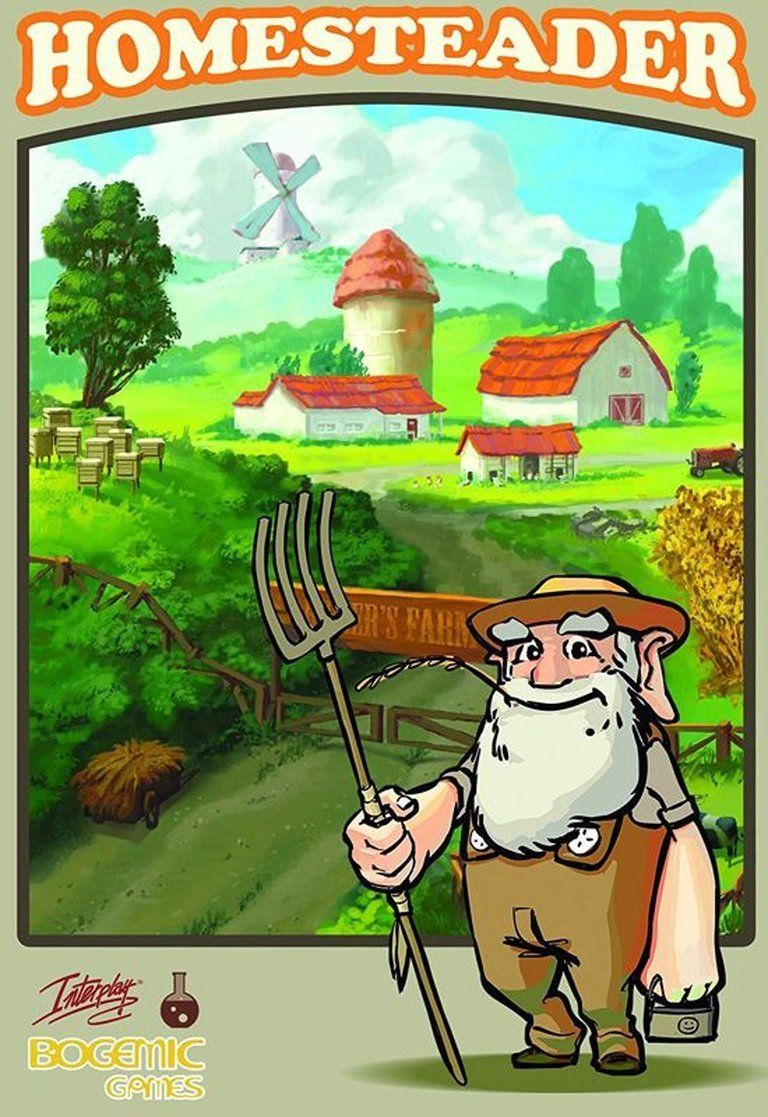- Release Year: 2011
- Platforms: OnLive, Windows
- Publisher: Interplay Entertainment Corp.
- Developer: Bogemic Games
- Genre: Action, Puzzle
- Perspective: Side view
- Game Mode: Single-player
- Gameplay: Point and select, Tile matching puzzle

Description
Homesteader is a tile-matching puzzle game where players build and expand their homestead by collecting resources through matching three or more adjacent tiles on an 8×8 grid. What sets it apart from typical matching games is its unique mechanic allowing tile movement in all eight directions, including diagonally, enabling strategic swaps and chain reactions. The game features 26 levels across four difficulty settings, special modes like Alaska Mode and Blitz Mode, and challenges players to construct their farm through creative tile-matching strategies.
Where to Buy Homesteader
PC
Mods
Homesteader: Review
Introduction
Homesteader is a 2011 tile-matching puzzle game that farm-ified the classic match-3 formula with an 8-directional twist. Despite launching in an era dominated by gaming giants like Bejeweled and Candy Crush, it remained an underdog. But like a well-tended homestead, it still holds value in its unique mechanics and endearing presentation.
Development History & Context
In 2011, Interplay Entertainment, once the titan behindFallout and Descent, launched its Discovery Labelto breathe life into indie games. Homesteader, developed by Russia’s Bogemic Games, was the fourth title under this banner. Its debut coincided with the rise of Facebook gaming and mobile match-3 titans, offering a desktop alternative with deeper strategy via its diagonal swaps and varied modes. Though overshadowed by the freemium juggernauts, it found a niche among puzzle lovers seeking a fresh take.
Narrative & Thematic Deep Dive
Set in the idyllic rigorous farmlands, Homesteader tells the tale of Homer, the weathered homesteader. Players are tasked with helping him build and expand his farm by collecting resources through strategic tile matches. The narrative is light-hearted, with old-West patter and folksy charm, echoing games like Harvest Moon but in puzzle form.
But beneath the surface, Homesteader explores themes of resource management and environmental challenges. Alaska Mode’s freezing ground and Blitz Mode’s time constraints symbolize nature’s unforgiving timetable. The core plot may be simple, but the thematic layer adds depth for those who till deeper.
Gameplay Mechanics & Systems
At its heart, Homesteader is a match-3 game on an 8×8 grid with an innovative twist: tiles can be swapped in any of eight directions. This mechanic opens a realm of possibilities for creating matches beyond traditional rows and columns. Diagonal connections become viable, allowing for L-shaped, T-shaped, and even “knights move” matches.
The core loop is satisfying: players swap tiles to create matches, which converts resources that help expand the homestead. Each match yields points and resources, and chain reactions multiply their value. This depth makes Homesteader stand out from its four-directional counterparts.
But the game doesn’t stop there. Alaska Mode introduces a timer that freezes unmatched tiles, adding pressure. Blitz Mode condenses each level into a minute, forcing rapid, strategic moves. These modes add replay value and challenge, ensuring the gameplay remains engaging.
World-Building, Art & Sound
Visually, Homesteader presents a whimsical farm world with pixel art怀旧风情. The graphics are bright and cartoony, with endearing character designs and detailed farm elements. The art style evokes titles like Riverside Richeswhile maintaining its unique charm.
The sound design complements the gameplay with satisfying “clink” sounds for matches and ambient farm noises. The soundtrack features upbeat, folksy tunes that encourage a relaxed but focused playstyle. All these elements combine to create an immersive and cheerful atmosphere, making the game a pleasure to play.
Reception & Legacy
Homesteader’s reception was lukewarm at best. With sparse critic and user reviews, it failed to make waves in a market increasingly dominated by mobile and social games. However, its influence lingers in the match-3 genre through its 8-directional mechanic, demonstrating that innovation can exist even in the most crowded marketplaces.
Conclusion
Homesteader’s place in video game history may not be grand, but it’s irrefutable. By introducing 8-directional swaps and varied difficulty modes, it expanded the match-3 formula. Its charm lies in its simplicity, depth, and unique presentation. Though overlooked, Homesteader remains a hidden gem for puzzle enthusiasts seeking more from their match-3 experiences.